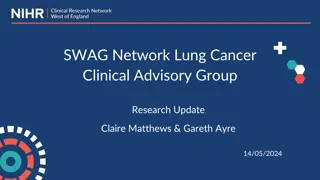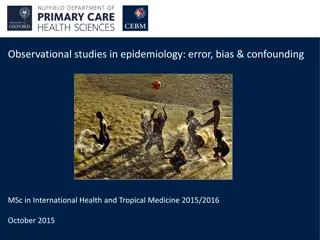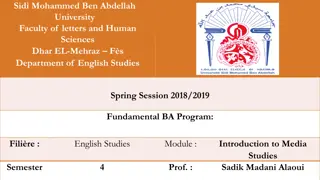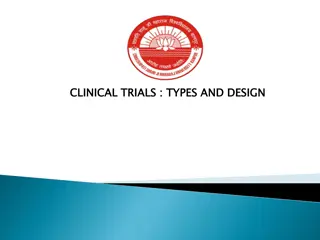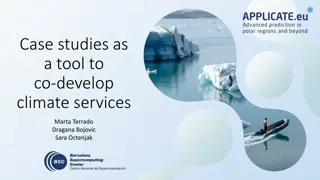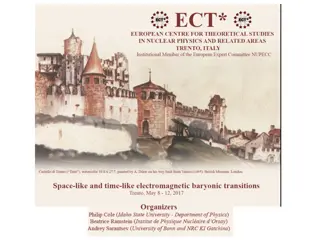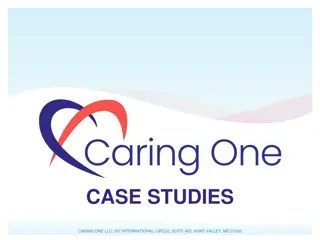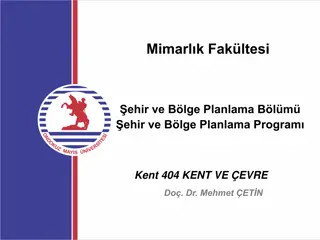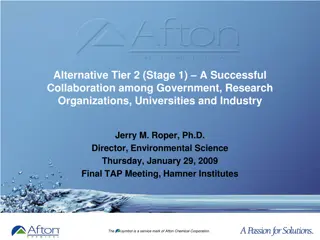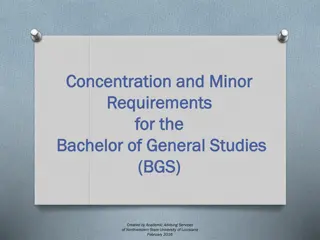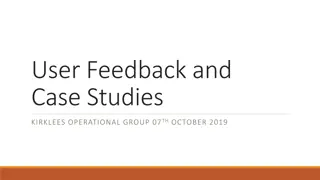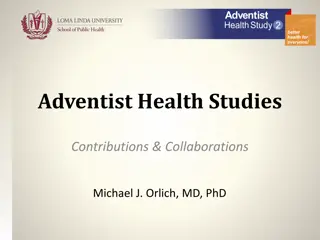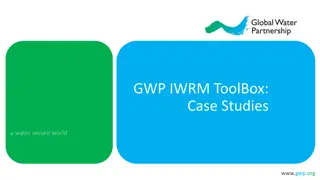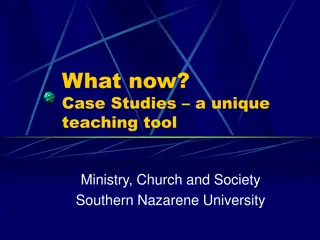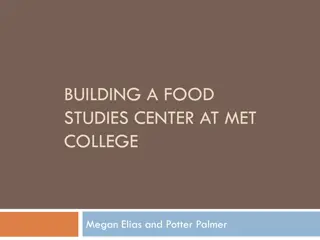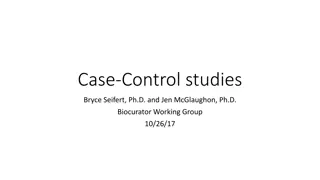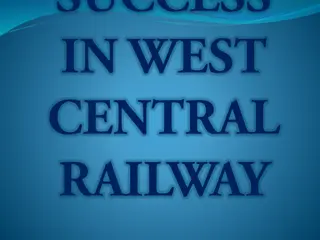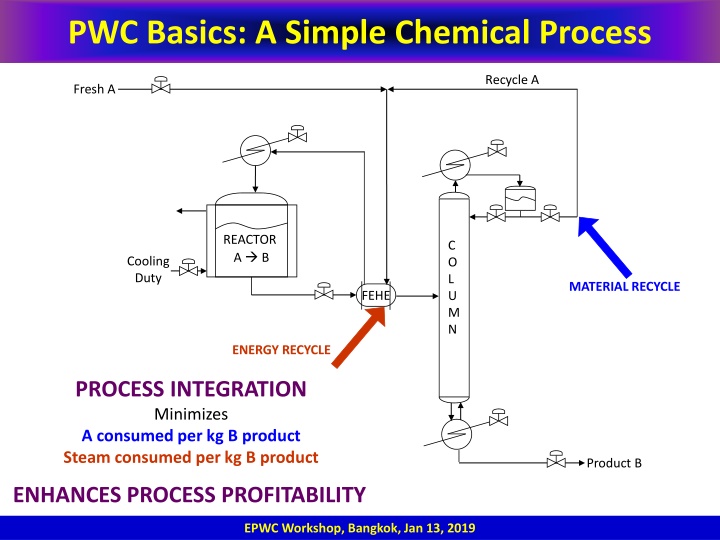
Essential Insights into Chemical Process Optimization
Explore key aspects of plantwide control strategies, regulatory system design, safety protocols, and process integration techniques in chemical operations. Learn how to achieve economic efficiency and enhance production quality while maintaining stability and safety. Gain valuable knowledge from PWC Basics workshop insights shared in Bangkok.
Download Presentation

Please find below an Image/Link to download the presentation.
The content on the website is provided AS IS for your information and personal use only. It may not be sold, licensed, or shared on other websites without obtaining consent from the author. If you encounter any issues during the download, it is possible that the publisher has removed the file from their server.
You are allowed to download the files provided on this website for personal or commercial use, subject to the condition that they are used lawfully. All files are the property of their respective owners.
The content on the website is provided AS IS for your information and personal use only. It may not be sold, licensed, or shared on other websites without obtaining consent from the author.
E N D
Presentation Transcript
PWC Basics: A Simple Chemical Process Recycle A Fresh A REACTOR A B C O L U M N Cooling Duty MATERIAL RECYCLE FEHE ENERGY RECYCLE PROCESS INTEGRATION Minimizes A consumed per kg B product Steam consumed per kg B product Product B ENHANCES PROCESS PROFITABILITY EPWC Workshop, Bangkok, Jan 13, 2019
PWC Basics: Chemical Process Operation Key Production Objectives Safety Stability Economics Production Rate Product Quality Effluent Specs Operate plant to meet production objectives 24X7 Production Objective Itself Can Change Process Disturbances Ambient Conditions Sensor Noise Equipment Characteristics Raw material Quality EPWC Workshop, Bangkok, Jan 13, 2019
PWC Basics Safety Operate Process at Steady State Stability 0 Accumulation Rate = Rate In Rate Out Generation Rate + Need PWC to drive accumulation of all independent inventories to zero EPWC Workshop, Bangkok, Jan 13, 2019
PWC Basics Regulatory Control System Drives all inventory accumulation terms to zero Ensures plant operation around a steady state What steady state to operate at Economic Optimum Minimize expensive utility consumption Maximize production EPWC Workshop, Bangkok, Jan 13, 2019
Plantwide Control Hierarchy PLANTWIDE CONTROL SYSTEM Optimization Layer (updates every few hrs) Economic Operation SETPOINT M e a s u r e m e n t s Supervisory Control Layer (updates every few mins) SETPOINT Safe & Stable Operation Regulatory Control Layer (updates every few secs) SIGNAL TO VALVE PLANT EPWC Workshop, Bangkok, Jan 13, 2019
Regulatory PWCS Design What to Control All independent inventories (DOF) Material Liquid level or gas pressure Energy Temperature or vapor pressure Component Composition, tray temperature (inferential) Throughput or Production Rate Degree of tightness of control Should energy inventories be tightly controlled? Should surge level inventories be tightly controlled? What to manipulate Pair close Fast dynamics Tight closed loop control Location of through-put manipulator a key decision for inventory management and economics EPWC Workshop, Bangkok, Jan 13, 2019
The Transformation of Variability Perspective HEAT EXCHANGER EXAMPLE TC Control Valve Steam in Transmitter TT HEAT EXCHANGER HEAT EXCHANGER Process Stream in Process Stream out Condensate out Steam Flow Steam Flow Temperature Temperature CONTROL SYSTEM Agent for transformation / management of process variability EPWC Workshop, Bangkok, Jan 13, 2019
Where to Transform Variability Surge level Does not affect steady state Regulate loosely for filtering out flow transients Energy Inventories Regulate tightly to guarantee safety (rxn runaway?) Product quality Regulate tightly Minimize free product give-away Production rate Often loose is OK (eg meet the monthly target) Recycle loop circulation rates Regulate to avoid large drifts All equipment inside recycle loop see acceptable variability EPWC Workshop, Bangkok, Jan 13, 2019
Nonlinearity in Material Recycle Loops STEADY STATES NO FEASIBLE Recycle Rate Snowballing Fresh Feed Rate Fixing the fresh feed rate of a recycled component is NOT a good idea Possibility of overfeeding induced instability EPWC Workshop, Bangkok, Jan 13, 2019
Material Recycle Snowball Effect TPM FC Recycle A Fresh A PC RC LC TC REACTOR A B C O L U M N LC Cooling Water Recycle loop shows large swings Large Throughput De-rating R TC FA % LC Product B Time EPWC Workshop, Bangkok, Jan 13, 2019
Material Recycle Snowball Effect TPM FC Recycle A Fresh A PC RC LC TC REACTOR A B C O L U M N LC Cooling Water No large swings in recycle rate Lower Throughput De-rating TC LC Product B EPWC Workshop, Bangkok, Jan 13, 2019
Alternative Material Balance Control Schemes IC Fixed Feed Recycle Floats IC FC P F Recycle FC IC Fixed Recycle Feed Floats IC P F Recycle Configure control structure to transform recycle rate variability out of the recycle loop EPWC Workshop, Bangkok, Jan 13, 2019
PWC Basics: Throughput Manipulation THROUGHOUT MANIPULATOR (TPM) The setpoint adjusted to effect a change in production/processing rate TPM * FC LC LC LC Unit 2 Unit 3 Unit 1 Lost production TPM * FC LC LC LC Unit 2 Unit 3 Unit 1 No (min) production loss EPWC Workshop, Bangkok, Jan 13, 2019
PWC Basics: TPM Selection When is TPM choice flexible Large storage tanks supply the fresh feed(s) Variability in storage tank level is acceptable Allows structures that bring in fresh feed(s) as make-up Usually plant designs have large recycle rates Design in the snowballing region Capacity bottleneck then is likely inside the loop Where to locate the TPM Inside the recycle loop If multiple recycle loops, on a common branch If bottleneck is known, AT the bottleneck EPWC Workshop, Bangkok, Jan 13, 2019
Reactor Separator Recycle Process FA Control DOFs Surge Levels Given Column Pr --------------------------------- Steady State DOF --------------------------------- 9 -2 -1 FB C O L U M N A + B C 6 Product C EPWC Workshop, Bangkok, Jan 13, 2019
PWCS Design: TPM at Fresh Feed CC X PC FC FA TPM LC FC FC FB C O L U M N LC A + B C TC TC LC Product C EPWC Workshop, Bangkok, Jan 13, 2019
PWCS Design: Recycle Drifts Beware of subtle plantwide recycle loop inventory drifts Stoichiometric feed balancing Plantwide balances close slowly due to recycle Always examine process input-output structure Every component must find a way out or get consumed (DOWNS DRILL) FC FA IC Recycle A PC IC Recycle B FB For (near) pure C product, FA = FB EPWC Workshop, Bangkok, Jan 13, 2019
PWCS Design: TPM at Column Boilup CC X PC FC FA LC LC FC FB C O L U M N TC A + B C TPM TC FC LC Product C EPWC Workshop, Bangkok, Jan 13, 2019
PWCS Design Steps DOF analysis and control objectives Production rate, Product quality Safety limits (eg UFL < gas loop composition < LFL) Inventories Economic Choose TPM Feed set by an upstream process On demand operation (utility plants) Flexible Inside the recycle loop at the feed of the most non-linear/fragile unit If bottleneck is known, at the bottleneck inside the recycle loop Design local loops for closing all independent material and energy balances around the TPM Radiate outwards from the TPM Check consistency of material / energy balance closure (Downs Drill) Design economic control loops Active constraint control & SOCV control EPWC Workshop, Bangkok, Jan 13, 2019
Mode I Optimum Operation OBJECTIVE MIN J = Boilup at given throughput subject to process constraints FA FB C O L U M N ACTIVE CONSTRAINTS TrxrMAX Max reactor temperature LVLrxrMAX MAX reactor level xCprdMINMIN product purity A + B C EQUALITY CONSTRAINT P Given throughput Product C UNCONSTRAINED DOFs SOCV1 L/F SOCV2 [A/B]rxr Reflux to feed ratio Reactor A/B ratio EPWC Workshop, Bangkok, Jan 13, 2019
Mode II Optimum Operation OBJECTIVE MAX J = Throughput (P) subject to process constraints FA FB C O L U M N ACTIVE CONSTRAINTS TrxrMAX Max reactor temperature LVLrxrMAX MAX reactor level xCprdMINMIN product purity PMAX Capacity bottleneck A + B C UNCONSTRAINED DOFs SOCV1 L/F SOCV2 [A/B]rxr Reflux to feed ratio Reactor A/B ratio Product C EPWC Workshop, Bangkok, Jan 13, 2019
PWCS Design: TPM at Fresh Feed MODE II CONSTRAINTS TrxrMAX, LVLrxrMAX xCprdMIN, PMAX [A/B]rxr CRC L/F CC X PC X SOCVs L/F,[A/B]rxr FC FA TPM LC FC FC FB C O L U M N LVLrxrMAX LC A + B C TrxrMAX TC TC MAX Long Loop Large MAX - PC LC xCprdMIN CC PMAX - Product C EPWC Workshop, Bangkok, Jan 13, 2019
PWCS Design: TPM at Fresh Feed [A/B]rxr CRC L/F CC X PC X FC TPM FA LC FC LS FC FB C O L U M N LVLrxrMAX LC A + B C TrxrMAX TC TC Long Loop Large PC LC xCprdMIN CC PMAX - Product C EPWC Workshop, Bangkok, Jan 13, 2019
PWCS Design: TPM at Bottleneck MAX MAX - [A/B]rxr CRC Negligible back-off L/F CC X PC X FC FA LVLrxrMAX LC LC FC FB C O L U M N TC A + B C TPM TrxrMAX TC FC LC PC xCprdMIN PMAX - CC Product C EPWC Workshop, Bangkok, Jan 13, 2019
PWCS Design: TPM at Bottleneck [A/B]rxr CRC L/F CC X PC X FC FA LVLrxrMAX LC LC FC FB C O L U M N TC TPM A + B C TrxrMAX TC LS FC LC PC xCprdMIN PMAX CC Product C EPWC Workshop, Bangkok, Jan 13, 2019
Switching Regulatory Control Structure [A/B]rxr CRC L/F CC X PC X FC TPM FA LC FC LS FC 5% FB C O L U M N HLC LC LTC LS LVLrxrMAX 2 C A + B C TC TC LS PMAX PC TrxrMAX LC xCprdMIN CC Product C EPWC Workshop, Bangkok, Jan 13, 2019
Summary Locate TPM at bottleneck inside recycle loop Economic considerations play a major role in regulatory control layer design COMMON SENSE MUST PREVAIL Everything must be carefully thought through It pays to be systematic EPWC Workshop, Bangkok, Jan 13, 2019
Case Study I: Ester Purification Process Recycle QCnd L D FH2O FCol Distillation column QReb Ethyl acetate Ethanol Water Extractor FTot FFeed FEster FAlc-wash 28 EPWC Workshop, Bangkok, Jan 13, 2019
Flowsheet Material Balances Recycle QCnd L D FH2O Fresh feed FCol Distillation column Alcohol wash LLX feed Column feed QReb Extractor FTot FFeed Water feed FEster Product EtOH-H2O recycle FAlc-wash 29 EPWC Workshop, Bangkok, Jan 13, 2019
Control Objective Operate plant to maximize ester production BOTTLENECK Maximum water solvent rate to the extractor Hydraulic constraint Limits alcohol extraction capacity EPWC Workshop, Bangkok, Jan 13, 2019
Steady State Bifurcation Analysis Fresh Water Rate = MAX (b) (a) Infeasible setpoint No setpoint Infeasibility 31 EPWC Workshop, Bangkok, Jan 13, 2019
Control Structure 2 PC Recycle QCnd MAX X FC LC FC L D LC FH2O FCol Distillation column TC QReb FC TPM Extractor LC FTot FFeed FEster LC FAlc-wash 32 EPWC Workshop, Bangkok, Jan 13, 2019
CS1: TPM at Bottleneck Feed PC Recycle QCnd MAX X FC LC FC L D LC FH2O FCol Distillation column TC QReb FC TPM Extractor LC FTot FFeed FEster LC FAlc-wash 33 EPWC Workshop, Bangkok, Jan 13, 2019
CS1: TPM at Bottleneck Feed PC Recycle QCnd MAX X FC LC FC L D LC FH2O FCol Distillation column TC QReb FC TPM Extractor LC FTot FFeed FEster LC FAlc-wash 34 EPWC Workshop, Bangkok, Jan 13, 2019
CS2: TPM at Fresh Feed PC Recycle QCnd MAX X FC LC FC L D LC FH2O FCol Distillation column TC QReb FC TPM Extractor LC FTot FFeed FEster LC FAlc-wash 35 EPWC Workshop, Bangkok, Jan 13, 2019
CS1 Closed Loop Transients Large Feed Composition Change EPWC Workshop, Bangkok, Jan 13, 2019
CS2 Closed Loop Transients Large Feed Composition Change EPWC Workshop, Bangkok, Jan 13, 2019
Throughout Maximization Results CS1 Self regulatory CS2 Overfeeding infeasibility 174 kmol/h Nominal maximum throughput 147.3 kmol/h 136 kmol/h EPWC Workshop, Bangkok, Jan 13, 2019

